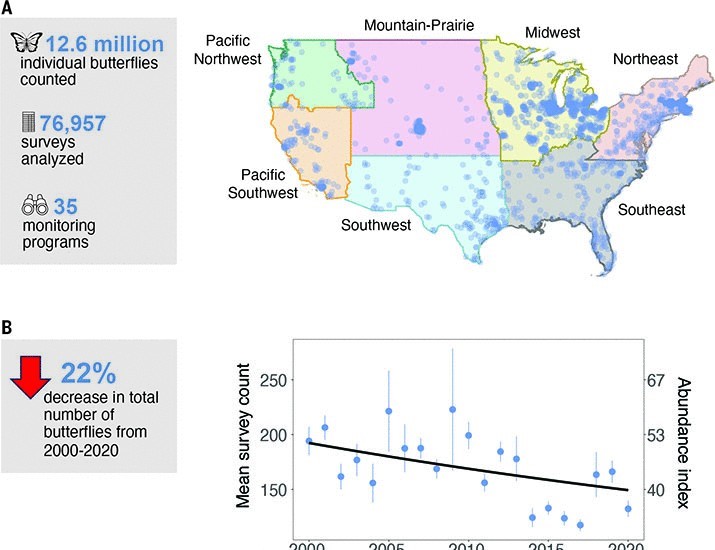US Butterfly Population Declines by 22% Due to Threats
Why in the News?
A new study published in Science reveals a 22% decline in US butterfly populations since 2000 due to insecticides, climate change, and habitat loss. Researchers warn of severe ecological consequences, urging conservation efforts to restore butterfly habitats.
Key Findings:
- A study published in Science found a 22% decline in butterfly populations in the US since 2000.
- Researchers analyzed 76,957 surveys from 35 monitoring programs, covering 12.6 million butterflies.
- On average, butterfly populations in the lower 48 states declined by 1.3% per year.
- Monarch butterflies, set to be listed as a threatened species, have dropped from 1.2 million in 1997 to fewer than 10,000.
Causes and Impact
- The primary causes of butterfly decline are insecticides, climate change, and habitat loss.
- The Southwest experienced the highest decline, with numbers falling by over 50% in 20 years.
- Species in warmer southern regions fared worse than those in cooler northern areas.
- Insecticides are identified as the biggest contributor due to changes in usage patterns over time.
- Experts warn that the decline of butterflies signals broader environmental issues affecting ecosystems and biodiversity.
Way Forward
- Habitat restoration offers a potential solution to reversing butterfly declines.
- Individuals can contribute by creating butterfly-friendly spaces in their backyards and communities.
- Conservation efforts at local and state levels could significantly improve butterfly populations.
- The study highlights the urgent need for sustainable agricultural practices and climate action.




